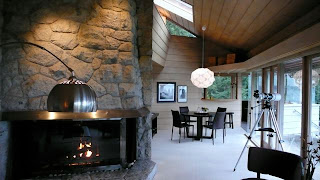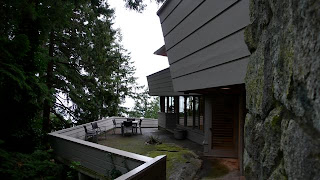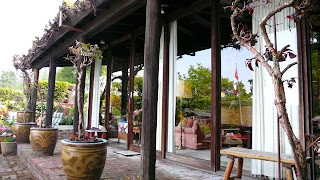Two houses currently for sale in West Vancouver showcase the unique residential approaches of two of the city's most prominent architects from the last century.
Ron Thom's 1957 Southworth Residence and Arthur Erickson's 1963 Bayles Residence both spring from the heyday of West Coast Modernism and display an integral connection to the rugged North Shore landscape.






Inside, the ceilings find all kinds of angles and odd corners that come together like intricate wooden origami. The influence of Wright is apparent in the layout and the stone-faced hearth that dominates the main living area and wraps around to the front entrance.


Thom once famously said a building should "make love to a site", a comment which suits the Southworth Residence just fine. The house remains in excellent condition with much of its original character intact.

Erickson's Bayles Residence shares similar programmatic concerns with the Southworth and, at 1800 sq. ft., is even smaller.
The house is built on a steep site with a rock bluff looking out over the water. Erickson has incorporated the rock, but instead built on top of it, as if just lightly placing the structure down on the site.


This house anticipates the more refined 1964 Smith Residence with a stepped plan that makes use of the topography: stretching one part of the house between two rocky peaks resulting in varying levels.


Like Thom's work, the scale is intimate and human with a limited material palette that includes wood (some sourced from the site), recycled brick, stucco and glass.


The two houses show different approaches while still respecting the importance of the site. Erickson's use of glass is more generous and his design has a cerebral calm and clarity about it. Thom's work on the other hand feels more complex, intricate and affecting.
Both architects would go on to larger works but there's an economy of scale and integrity of materials that give these places a timeless quality. There are very few grand gestures, just many unpretentious, thoughtfully executed moves that come together in a compelling and satisfying way. More than anything it is this aesthetic that remains relevant.







